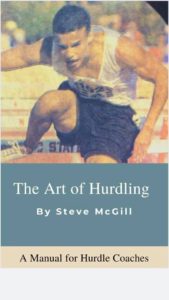February 6, 2020
In my book, The Art of Hurdling: A Manual for Coaches, I explain how I approach hurdling, and coaching hurdlers, from a 1-2-3 perspective. The seeds of this approach began, unbeknownst even to myself, when I was diagnosed with aplastic anemia during my teen years. My doctor informed me that this blood disease is characterized by bone marrow failure—the bone marrow ceases to produce new blood cells, so the victim slowly runs out of blood. Blood, my doctor explained, is comprised of three types of cells: red blood cells, which carry oxygen to all parts of the body; white blood cells, which serve to fight off infections; and platelet cells, which prevent bleeding and bruises. His brief hematology lesson gave me insight as to why I had been feeling tired all the time (low red cell count), why I’d been getting a weird whirring sound in my ears (low white cell count), and why random bruises would sometimes appear on my arms and feet (low platelet cell count).
It wasn’t until years later—after I had made a full recovery, graduated from college and then grad school, and then began working full-time—that I found myself contemplating the wonder of it all. These three types of cells work together to create a harmonious balance, a marvelous tapestry of rhythm in motion to protect the body from internal and external threats. If there is an imbalance in any of the three, there is an imbalance in the entire system, and therefore in the entire body, which can lead to a myriad of possible catastrophes. And yet, until we get sick, we don’t even think about how fragile our health is, and all the things that could possibly go wrong.
